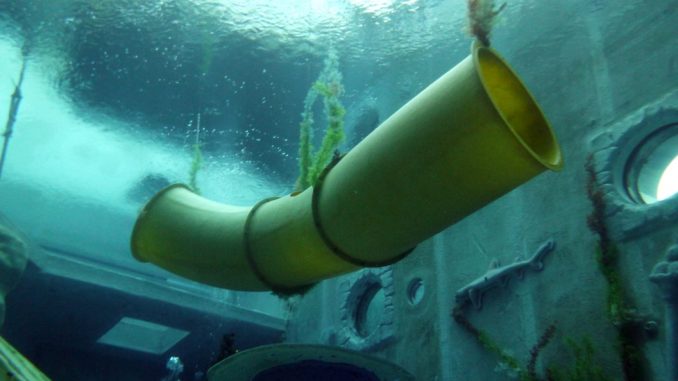
When a pipe starts leaking underwater, carrying out a repair can seem like a daunting task. Whether we are talking about a small section of pipe in a pond or a massive transportation pipeline traversing oceans and lakes, the thought of having to remove the damaged section to dry land before attempting to fix it might seem like an insurmountable challenge.
The good news is that it is a challenge you do not need to overcome. Advances in pipe repair technology mean that it is now possible to fix a leaking pipe whilst it is still underwater, making the task a lot less onerous.
Here are three methods for carrying out an underwater pipe repair.
Specialist underwater epoxy putty
Epoxy putty is one of the most popular tools for carrying out a pipe repair on dry land. It is easy to use – you simply mix the two parts together and the putty will begin to cure.
As it does so, the soft putty is pushed into and used to cover the hole where it will harden, filling the crack and sealing the lack.
Because an epoxy putty repair requires mixing and curing, a lot of people assume that it cannot be done underwater. There is also a certain amount of scepticism surrounding how cohesive a bond epoxy putty is able to form in such conditions.
Whilst most epoxy putties will work in wet and damp surfaces, specially formulated underwater epoxy putty can be mixed and will cure underwater, ensuring that the entire process can be carried out in freshwater and saltwater conditions.
Two of the most popular underwater epoxy putties are Superfast Aqua Stick and Sylmasta AB Original. The Superfast Stick comes in a pre-measured stick format. The user needs only cut off the amount of putty required, knead it by hand and then apply.
Sylmasta AB Original has a longer working time of up to two hours, allowing for larger quantities of putty to be mixed for bigger jobs.
As well as pipe repair, underwater putties can be used for fixing cracks in tiles; repairing swimming pools, hot tubs and spas; and fixing boats and other vessels.
One note of caution – some putties may prove harmful to fish if not used correctly. When repairing a fish pond or tank, you should always check whether the product could have a damaging impact on marine life.
Composite pipe repair bandages
When it comes to strengthening or protecting an underwater pipe, the solution is simple – use a composite pipe repair bandage which is water activated.
As soon as the wrap is exposed to water, the bandage will begin to cure. It can then be wrapped around pipes and other underwater structures, where it will reinforce and provide an impact resistant layer over existing repairs.
Those carrying out repairs in saltwater conditions can even use specialist repair wraps to prevent corrosion.
These are pipe repair bandages infused with highly effective corrosion inhibitors which can prevent the process of environmental corrosion from occurring.
Underwater pipe repair clamp
Underwater pipe repair clamps work in much the same way as a normal pipe repair clamp. They are heavy-duty devices which encapsulate a damaged section of pipeline, allowing the pipe to regain pressure integrity through mechanical seals which clamp onto the pipe.
These types of clamp are mainly used by the oil and gas industries for the repair of major underwater pipelines. Installing them can be costly and challenging however and will often require the services of a contractor with specialist equipment.

Leave a Reply